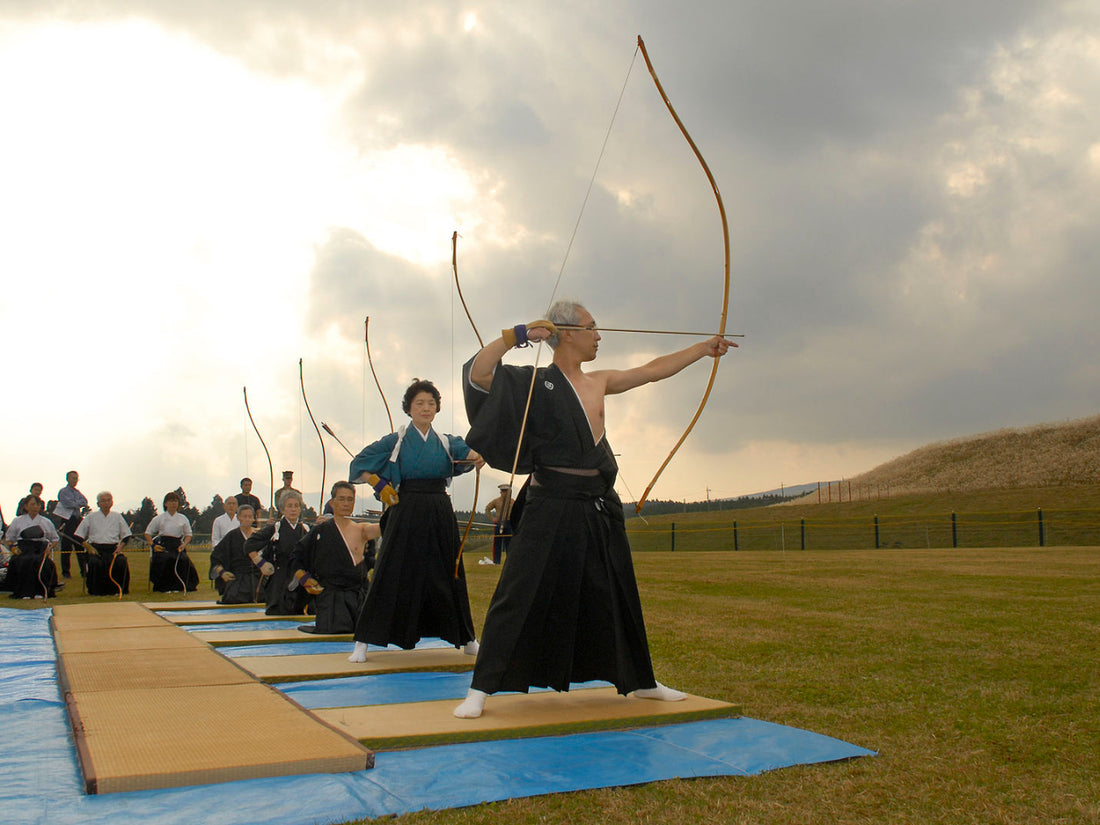Kyudo is the practice of Japanese archery, and its practitioners strive to achieve harmony between themselves and nature through the practice. It involves the use of traditional Japanese bows, which are made from wood and bamboo, as well as arrows made from bamboo. The goal of kyudo is to achieve a heightened state of awareness, balance, and concentration. It is said to bring about a sense of inner peace and harmony, and is a great way to learn discipline and focus.
What is Kyudo?

Kyudo, which translates to "the way of the bow," is an ancient Japanese martial art that is still practiced today. It is a form of archery that emphasizes correct form, mental focus, and physical discipline. At the heart of kyudo is the concept of “Zen”. Practitioners are encouraged to meditate before and after shooting an arrow in order to clear their minds and remain focused. It is believed that a clear mind is the key to accurate shots. Kyudo practitioners aim to shoot an arrow with a single, focused, and powerful breath. This is known as “hara-kiri-zuke”, which translates to “breathing into the heart”. Kyudo practitioners strive to achieve a state of harmony between body and soul, known as “mushin”.
The principle of modern kyudo is the pursuit of truth, goodness, and beauty. Truth emphasizes the idea of harmony among attitude, movement, and technique. Proper posture and movement are essential for a successful shot. All movements must be slow, deliberate, and precise. A pure mind is required for a true shot. Goodness is manifested in the qualities such as courtesy, morality, and compassion. Kyudo emphasizes the importance of patience and perseverance. A good practitioner should display proper attitude and behavior in any circumstance. Beauty is embodied in refined etiquette. Kyudo is a perfect combination of power and grace. Courtesy and respect for others are essential elements of kyudo practice.
History of Kyudo

The origin of the bow can be traced back to a long time ago. At the end of the Stone Age (4000 BC and 2000 BC), few ethnic groups in Asia had already begun to use bows and arrows. The earliest bow and arrow found in Japan is estimated to have been made between 1 AD and 3 AD of the Yayoi period (a period spanning the years from 400 BC to 300 AD). However, kyudo as a traditional martial art was brought from China to Japan during the Heian period.
Kyudo originated from the samurai class of Japan. From the late Heian period (794-1185) to the early Edo period (1603-1867), kyudo was used as a means to develop their skills as archers in order to fight on the battlefield. During the Edo period, Japan entered a long period of peace, and the samurai occupied the top level of social stratification and began to take up administrative duties. Although traditional combat skills were still respected, during this period archery became a “voluntary” skill and was practiced in the ceremonial form in the courtyard. As time passed, kyudo evolved into a martial art and a form of spiritual practice. It began to focus more on the mental and spiritual aspects of shooting rather than the physical. This is achieved through the practice of various forms and exercises, such as the “Kata”, which is an essential part of kyudo practice.
Details About Kyudo

In kyudo, the height of the bow used by kyujutsushi (archers) is far greater than the height of a person. The average bow is about 7.5 feet (2.3 m) tall and is said to be the tallest bow in the world. Even the shortest bow used by those less than 1.5 meters tall, has a length of more than 2 meters when unstrung. The most common bow used in kyudo is the asymmetrical "yumi" bow. It is a composite bow made of wood or bamboo with relatively low elasticity, making it very durable and strong. The handle is located between the motohazu (the lower tip of the bow) and the urahazu (the upper tip of the bow). This asymmetry between the top and bottom results in a different power of the bow, which leads to special techniques in kyudo. There are eight recognized stages in the seemingly continuous motion leading up to and including the shot of the arrow, each of which must be learned and practiced until the archer can perform each stage smoothly. The final stage called "zanshin" occurs after the arrow has been released from the bow. It is meant to be a kind of follow-through demonstrating good posture and execution of what just occurred -- an arrow being released by a skilled archer.
Places for practicing kyudo are called dojos (means "training hall"). In Japan, most dojos for kyudo training have a similar layout: an entrance, a large area for the dojo (usually with wooden floors and high ceilings) a makiwara (a practice target location with rolled straw mats), and a large open wall with sliding doors that, when opened, overlook an open grassland and a separate building, the shajo (field), which has a mound and a target 28 meters away from the dojo floor.

